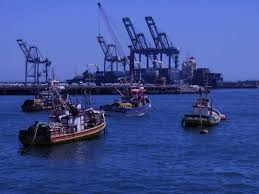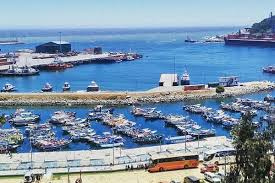How does San Antonio’s port compare to other ports in Chile?

How does San Antonio’s port compare to other ports in Chile?
How does San Antonio’s port compare to other ports in Chile? Chile is blessed with a diverse range of ports that serve its long coastline.
Each port has its unique characteristics and roles in the national economy.
From the northern ports like Iquique and Antofagasta to southern ports such as Valparaíso and Punta Arenas, each plays a crucial part in facilitating trade and transportation.
San Antonio: The Busiest Port
San Antonio is the busiest port in Chile, handling a significant share of the nation’s cargo traffic. Its strategic location and deep-water capabilities make it ideal for large vessels.
The port’s infrastructure has been modernized to accommodate container shipping, positioning it as a vital link in the supply chain for various industries, including agriculture and mining.
Valparaíso: A Historical Rival
Valparaíso, once the leading port of Chile, remains a significant competitor. Its rich history and cultural significance make it a popular destination for cruise ships and tourism.
While Valparaíso excels in handling passenger traffic and certain bulk goods, it has struggled with space limitations, unlike San Antonio, which has room for expansion and modernization.
Iquique and Antofagasta: Northern Giants
The northern ports of Iquique and Antofagasta focus primarily on mineral exports, especially copper. These ports are critical for Chile’s mining sector, serving companies that drive the national economy.
While they handle substantial cargo volumes, their geographical challenges, including shallow waters, can limit the size of vessels they accommodate compared to San Antonio’s capabilities.
Concepción and Talcahuano: Regional Hubs
Concepción and Talcahuano are essential for regional trade, especially in the central-southern parts of Chile. They handle various cargo types, including industrial goods and fishing products.
These ports serve local industries well but lack the extensive global reach that San Antonio offers, primarily due to their more localized focus and smaller infrastructure.
Container Shipping: A Key Differentiator
San Antonio’s emphasis on container shipping gives it a competitive edge. It has invested significantly in modern facilities to manage this type of cargo efficiently.
In contrast, other ports, like Valparaíso, have lagged in this regard, which can hinder their competitiveness in the fast-paced global trade environment.
Access and Connectivity
San Antonio’s proximity to major highways and railroads enhances its connectivity, making it easier for goods to reach inland markets. This logistical advantage strengthens its position as a leading port.
While other ports may have good local access, San Antonio’s comprehensive transport network allows for seamless movement of goods, making it a preferred choice for exporters.
Environmental Initiatives
As sustainability becomes increasingly important, San Antonio is taking steps to address environmental concerns. Initiatives aimed at reducing emissions and enhancing eco-friendly practices are in place.
Other ports, such as Valparaíso, are also making efforts but often face challenges due to their older infrastructures, making San Antonio a leader in this crucial area.
Economic Impact
San Antonio’s port significantly impacts the local and national economy. It generates jobs, supports local businesses, and contributes to Chile’s GDP through trade activities.
While other ports also play important roles, San Antonio’s volume of trade and investment gives it a unique status in shaping the economic landscape of the country.
Future Development Plans
Looking ahead, San Antonio is set to expand its facilities further, enhancing its capabilities to meet future trade demands. Plans for modernization and increased efficiency are underway.
In contrast, some other ports face challenges in terms of space and funding for upgrades, which may affect their growth potential compared to San Antonio.
In summary, while San Antonio’s port is the busiest and most strategically significant in Chile, other ports bring unique strengths to the table.
From historical significance to specialized capabilities, each port contributes to Chile’s rich maritime tapestry. However, San Antonio’s advantages in infrastructure, connectivity, and future development position it as a leader in the nation’s port system.





Leave a Reply